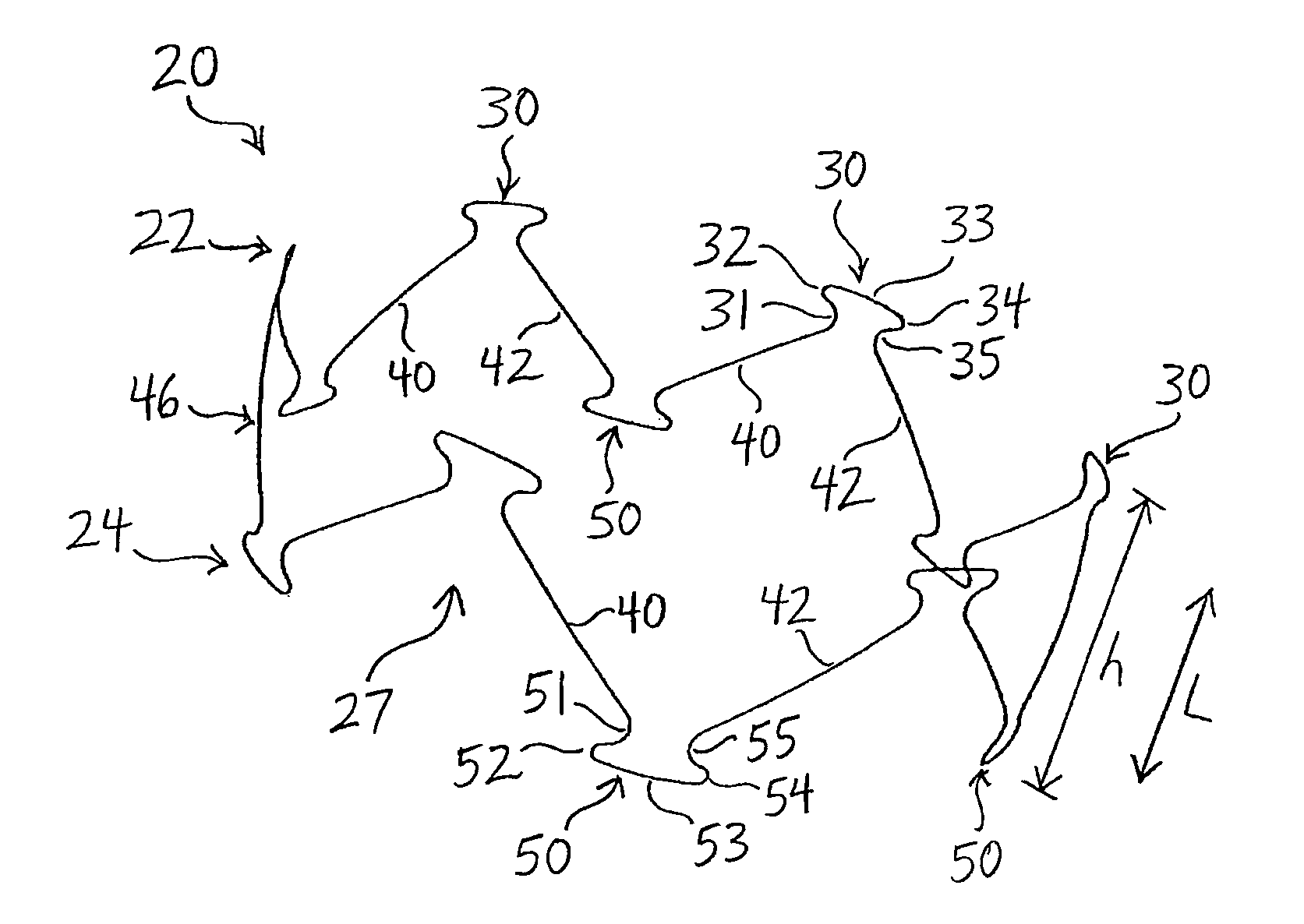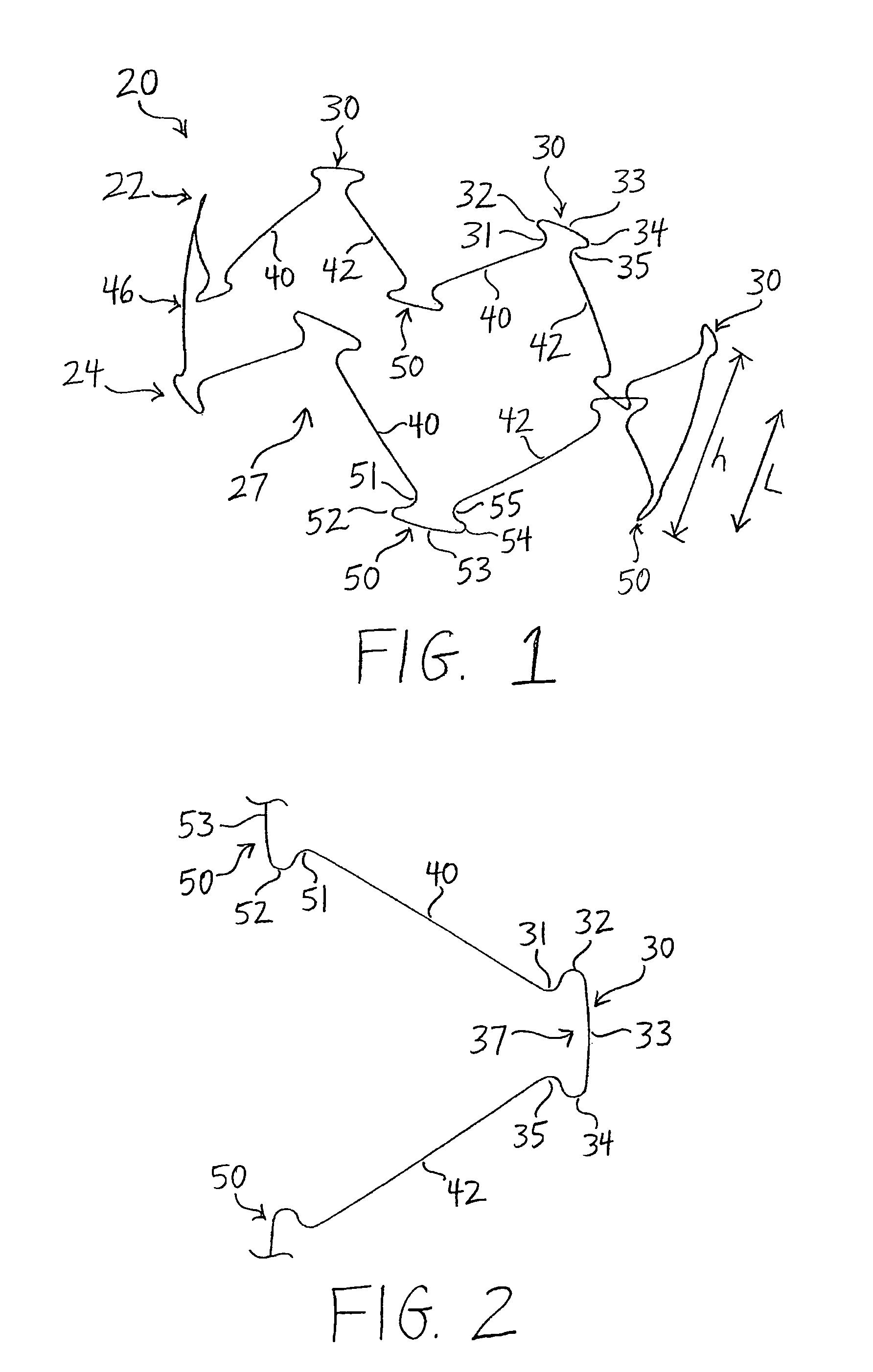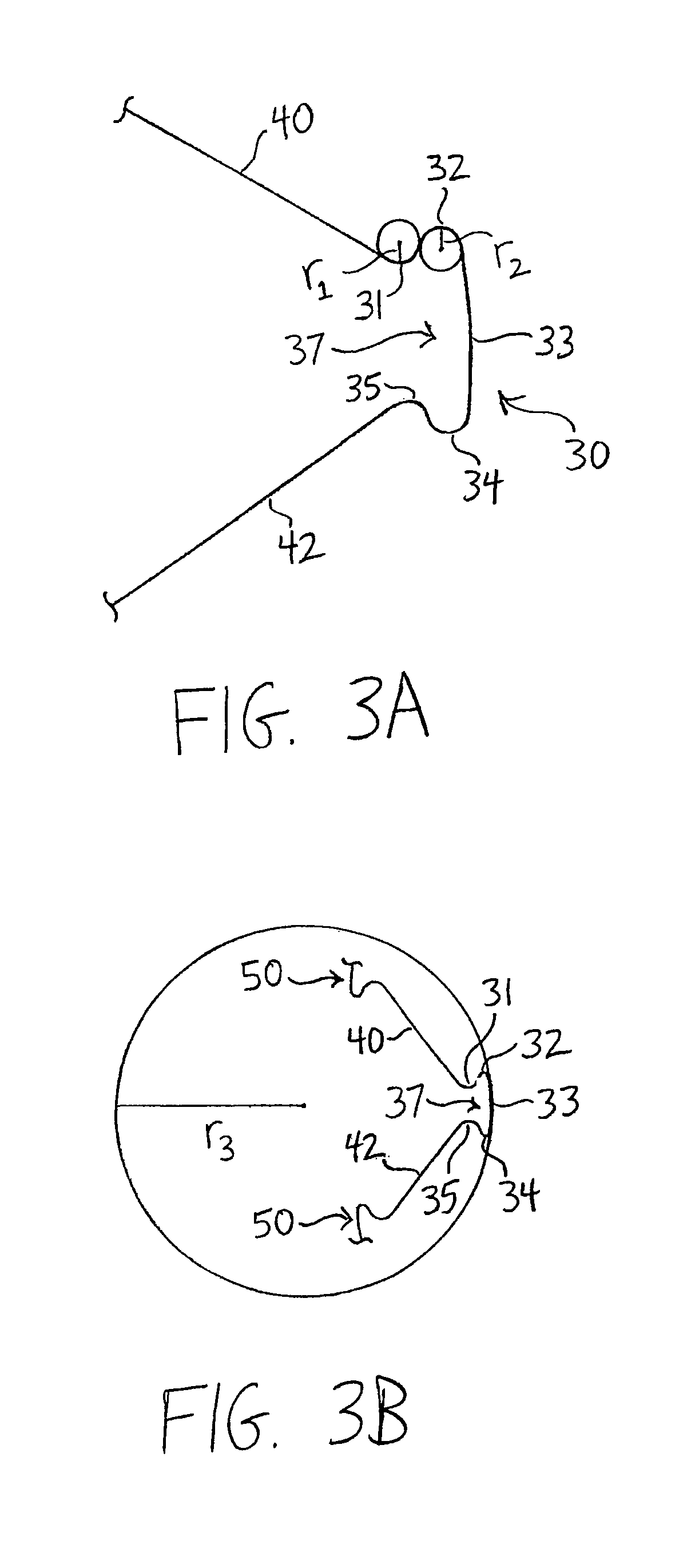Stent having less invasive ends and improved radial force
a radial force and endoscope technology, applied in the field of stents for use in body vessels, can solve the problems of relative acute or pointed apices, abraded graft material, breakdown of graft material, leakage through, etc., and achieves less invasiveness, increased conformance to the vessel wall, and increased radial force
- Summary
- Abstract
- Description
- Claims
- Application Information
AI Technical Summary
Benefits of technology
Problems solved by technology
Method used
Image
Examples
Embodiment Construction
[0041]In the present application, the term “proximal” refers to a direction that is generally closest to the heart during a medical procedure, while the term “distal” refers to a direction that is furthest from the heart during a medical procedure.
[0042]Referring now to FIG. 1, a stent 20 provided in accordance with a first example is described. The stent 20 generally comprises a proximal end 22 and a distal end 24. The stent 20 has a reduced diameter delivery state so that it may be advanced to a target location within a vessel or duct. The stent 20 also has an expanded deployed state, shown in FIG. 1, in which the stent 20 is configured to apply a radially outward force upon at least a portion of a vessel or duct, e.g., to maintain patency within a passageway, or to hold open the lumen of a graft. In the expanded state, fluid flow is allowed through a central lumen 27 of the stent 20.
[0043]As shown in FIG. 1, the proximal end 22 of the stent 20 may comprise multiple adjacent proxi...
PUM
 Login to View More
Login to View More Abstract
Description
Claims
Application Information
 Login to View More
Login to View More - R&D
- Intellectual Property
- Life Sciences
- Materials
- Tech Scout
- Unparalleled Data Quality
- Higher Quality Content
- 60% Fewer Hallucinations
Browse by: Latest US Patents, China's latest patents, Technical Efficacy Thesaurus, Application Domain, Technology Topic, Popular Technical Reports.
© 2025 PatSnap. All rights reserved.Legal|Privacy policy|Modern Slavery Act Transparency Statement|Sitemap|About US| Contact US: help@patsnap.com



